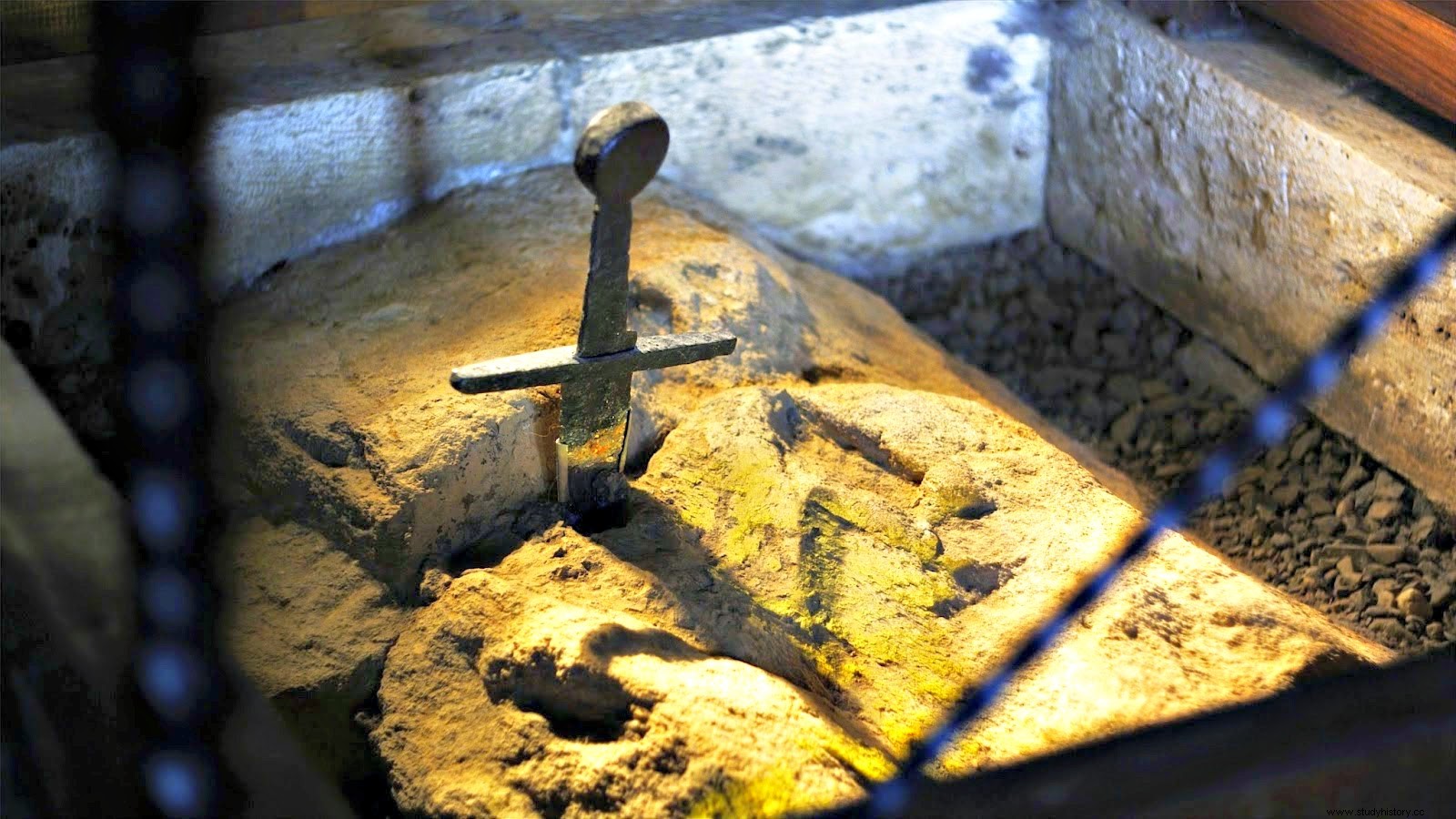One more year the Hollywood factory presents us with another film based on this iconic character from the European Middle Ages. The search for the protagonist that hides this legend has unleashed countless theories, and the historical figures that could inspire this monarch are a few. The first of this long list is a Roman soldier named Lucius Artorio Casto who lived in the second century of our era. This hypothesis has its own blockbuster, King Arthur (2004), to show us the soldier of the legions turned into a king. Other «Arturible » have been the king Rithamus who lived in the 5th century, the Welsh king Athrwys ap Meurig who lived during the 7th century or Owain Ddantgwin , a 5th-century British warlord.

King Arthur (2017)
When was the legend born?
To legitimize the first king of the Plantagenet dynasty in the lands of England Henry II commissioned the monk Godfrey of Monmouth the creation of a genealogy -in this case fantastic-. In Historia Regum Britanniae (1136) Godfrey descended the British crown from the Trojan Aeneas himself. In this way, the new Norman masters of those islands had their own epic. It is in these texts where the legend of a King begins to spread, before he was only mentioned as a warrior, and it is from that moment on that the legend takes shape, completing itself over time with various contributions.
We are going to add a Hispanic king to the list of these alleged «Arturibles» with which we started the article:Alfonso I de Aragón el Batallador . In 1992 the Swiss scholar André de Mandach was the one who proposed this new candidate after studying and analyzing Parzival , the work of the 13th century German knight and poet Wolfran von Essembach . In it the exploits of the knight Parzival in the court of King Arthur were sung. In some passages of this work the monarch is named as Anfortas . The title with which Alfonso I of Aragón (1073 – 1134) called himself was “Alfonso Totus Rex ”, and in its abbreviated form “Anfortas”.

Alfonso I of Aragon "the Battler"
This king, like the medieval archetype, was fascinated by the Orders of Chivalry, he was even part of one of them. Among the knights accompanying him were his cousin Rotrou II , count of Perche , (Percheval ) or the count Gaston de Bearn (Galbearn ). His extensive conquests range from the campaign of Granada (1126), in which he would end up fishing alongside his troops and would fit the legend of the "fisher king" that appears in Arthurian songs, to that of Bayonne (1131). . In the siege of this city in the south of France, Count Pedro Gonzalez de Lara joined the Battler's retinue. . A few years earlier, this same gentleman had rescued the Battler's wife, Doña Urraca , of the Castellar Castle (Zaragoza), where he himself had ordered to lock her up. In this way, the legend of Lancelot also seems to have its reflection. So, we can say that the creation of the Knight of the Round Table Parzival or Perceval is based on the life of King Alfonso.
And how did the adventures of the Aragonese king reach British lands?
Relations between Ramón Berenguer IV , Count of Barcelona and Prince of Aragon, since his wedding with Petronila , niece of Alfonso I, with the British King Enrique II were very close. In fact, when Ramón Berenguer died, in his will he left the English king as guardian of his son, the future King Alfonso II of Aragon. Many British knights had traveled south of the Pyrenees to join the fight against the 'infidels'. In the conquest of Tortosa, many of the soldiers of Enrique II joined the Aragonese troops to seize this important bastion on the banks of the Ebro, giving rise to surnames such as Anglés or Gal les that still survive in that area today. They also participated in the reconquest of Zaragoza in 1118, where we find the first known author in the Romance language:Guillermo de Poitiers (William the Troubadour ). Another character who linked the crown of Aragon with the British crown, since one of his granddaughters, Eleanor of Aquitaine , she married Enrique II and another, Petronila, was queen of Aragon. Undoubtedly, the marriage of Henry II to Eleanor of Aquitaine brought to the English court the stories of that Fighting King who traveled with a wandering court made up of the best knights from distant lands. This, together with the warriors who returned alive from those campaigns south of the Pyrenees, could give rise to the legend.

Sword of San Galgano
It is at this moment that a myth “King Arthur is born. ”. Just as the French poet Charitien de Troyes did some time later, Wolfran bon Essembach took the life of Alfonso I the Battler as his ideal patron for a medieval king. The "Arturo" created by Godofredo receives the title of King, and is endowed with an international scope. When contemplating the entire pattern that was created over these years, we can recognize facts, places, characters and events, which undoubtedly had the Aragonese king as a common thread. As with the sword of San Galgano, which was used to create the legend of Excalibur, it seems that the King of the Round Table can be found in the Iberian Peninsula. Thus, with the distorted prism of any work of fiction, we can recognize Arthur, Guinevere, Lancelot or Perceval.
